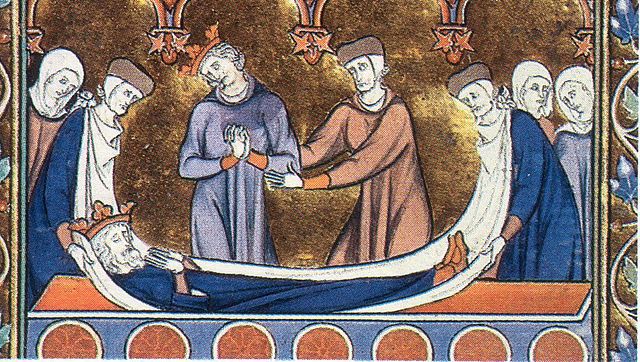On this day, 2 January 1315, Edward II, most likely highly emotional, finally buried his longtime favourite and lover Piers Gaveston, earl of Cornwall, who had been murdered some two-and-a-half years earlier in June 1312. Gaveston, his boon companion since 1300, had risen sharply in status since Edward’s accession in July 1307 and had remained a controversial figure at court until his untimely and premeditated death. Made earl of Cornwall and married to Margaret de Clare, sister to the earl of Gloucester, Gaveston ruffled feathers and upset the political landscape. See here for his bio: Piers Gaveston: Life, Love & Death (An Overview) By the start of 1312, after three exiles in five years from England, Gaveston was a hunted man, who was eventually cornered, summarily tried at Warwick castle and murdered at Blacklow Hill, two miles outside of the medieval town of Warwick. His enemies, notably Thomas of Lancaster, Edward II’s cousin, took the lead and the principal blame, but many of Edward’s magnates were guilty by association, no more so than the earl of Warwick himself. Vowing revenge, Edward bided his time and in his grief had the mutilated body of Piers (whose head had been decapitated and run through his stomach with a sword) embalmed at the Dominican house at Oxford. A contemporary chronicler of the time noted;
‘But I am certain the king grieved for Piers…for the greater the love, the greater the sorrow. In the lament of David on Jonathan, love is depicted which is said to have surpassed the love of women. Our king also spoke thus.’(1)
The greatest sadness in this tale, is in his grief, Edward was unable to immediately bury Piers on account that he had been declared excommunicate on his return to England in January 1312, and was therefore unable to receive Christian burial in sacred ground. Only after the sentence of excommunication was lifted was this possible, and it took Edward nearly two-and-a-half years to achieve it, when during a papal interregnum, Walter Reynolds, Archbishop of Canterbury was able to quash the church’s anathema. In the time that had passed since the earl of Cornwall’s murder, Edward had been publicly reconciled to Gaveston’s murderers, but deep in his heart the king still sought vengeance. On the 2nd January 1315, Edward, in a great ceremony finally laid his lover to rest.

Excerpt from ‘Edward II the Man: A Doomed Inheritance’ – Chapter 15, Disputes & Discord.
‘If Edward could not yet enact his revenge he could still make a point. The date for the funeral at the Dominican House at Edward’s residence at Langley was set for 2 January, which fell within the octave of the Holy Innocents. The symbolism could not have been plainer. Those in attendance included the Archbishop of Canterbury, the bishops of London, Winchester, Worcester and Bath and Wells; thirteen abbots, and many Dominican friars from beyond Langley… The earls of Pembroke and Hereford also attended with Henry de Beaumont and Hugh Despenser the Elder, who was accompanied by his son and namesake. The chancellor John Sandale and the treasurer Walter of Norwich were also present along with a multitude of household knights and royal household officials. Not all those invited, however, according to Trokelowe, attended, some preferring to stay away. Even in death, Gaveston still deeply divided opinion.
When the time came to bury him, an emotional Edward ensured Gaveston’s body, moved from Oxford, was re-wrapped in three cloths of gold, which the king paid for at a cost of £300. After the interment, the congregation feasted, the king having ordered twenty-three tuns of wine for the occasion. With Gaveston’s body interred, that chapter of Edward’s life was far from over. From the grave, Piers Gaveston would continue to influence the political agenda.'(2)
Stephen Spinks is author of ‘Edward II the Man: A Doomed Inheritance‘ available here at Waterstones Amazon Foyles Amberley Publishing
Notes
(1) Vita Edwardi Secundi. N Denholm-Young, 1957, 30.
(2) Edward II the Man: A Doomed Inheritance. Stephen Spinks (Amberley, 2017), 126-7.
Further Information
Facebook: Fourteenthcenturyfiend
Twitter: @SpinksStephen
Share this:




